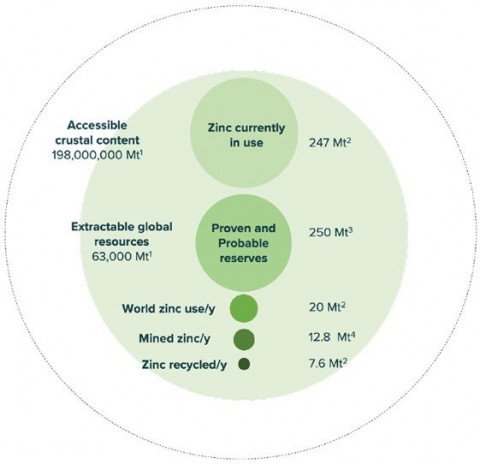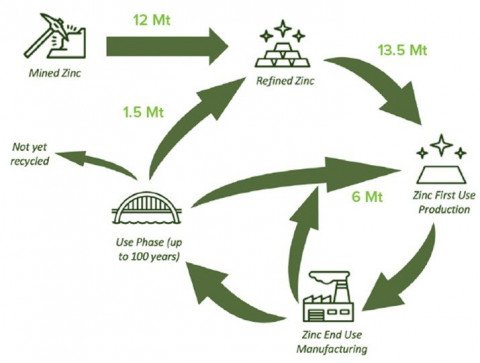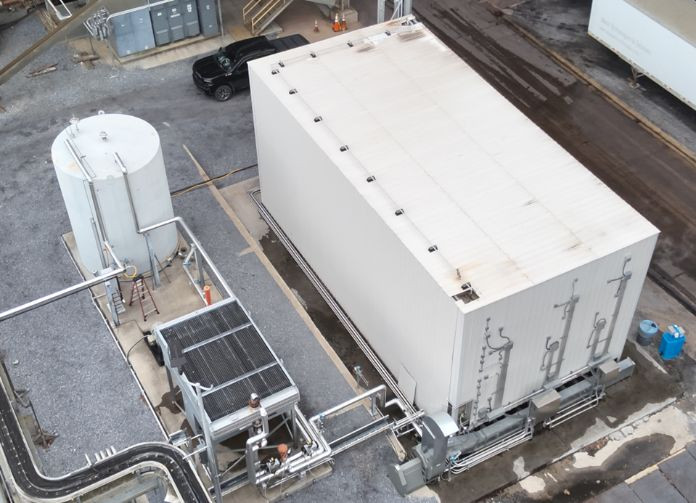Zinc Batteries: Rightly positioned to assist Energy Storage industry on sustainable goals
The energy storage industry is growing fast, it needs all solutions to reach its goals. All battery chemistries will play an important role to make the energy transition happening. Zinc batteries are cheap, safe, non-toxic, sustainable and recyclable, writes Martin van Leeuwen* of Zinc Battery Initiative (ZBI).
Batteries Events 2022, held last week in Lyon, France, hosted a special session on zinc batteries. Other special sessions were dedicated to sodium-ion batteries and lead-acid batteries. Having all these sessions at one of the largest battery events in Europe tells me that all battery types and chemistries have a role to play in the energy transition. While lithium-ion batteries and lead-acid batteries already have strong positions in the automotive and energy storage markets, new technologies as zinc and sodium-ion batteries can serve complementary roles.
The forecasts for deployed stationary energy storage capacity with batteries is about 1.2 TWh by 2030, and a stunning 7.7 TWh by 2050, according to a recent report by Bloomberg NEF. Approximately 90 percent of this global market requires energy batteries, while only 10 percent requires power batteries. While lithium-ion typically function best as power batteries, zinc batteries, lead-acid batteries and sodium-ion batteries mostly shine as energy batteries.
To reach these forecasts, we not only need to reach high battery performance and long lifetimes, but also the synergy of using all battery types and chemistries. In addition, Eurobat's new "Battery Innovation Roadmap 2030" concludes that all battery technologies are complementary, each with its own specific features and significant development potential. Developing all battery chemistries will maximize the contribution of the battery industry to meet the zero-emission targets and to reduce Europe's dependency on fossil fuels.
Lithium-ion technology is very mature today, and we anticipate more evolutionary rather than revolutionary changes in technology. This also means we can expect fewer performance enhancements and cost reductions with lithium-ion technology, while we predict large improvements with chemistries and technologies that have not yet fully matured. As prices of several raw materials for lithium cobalt oxide and nickel manganese cobalt type of lithium-ion batteries have exploded over recent years and supply chains become tighter, new technologies using more abundant and lower cost materials will be embraced.
In addition, this is the first year in which the reference price of lithium-ion batteries has increased - from $125/kWh to $160/kWh - after a long and continuous period of annual price reductions, as quoted by Avicenne at the Batteries Event.
Other areas where zinc batteries shine are natural abundance and sustainability. Zinc batteries are produced from abundant and available raw materials. Zinc is currently mined in 51 different countries and refined in 27 countries over the globe of which many are politically stable and easy to access. While 12.8 million tons (Mt) of zinc is mined annually, 250 Mt of zinc are available in proven and probable reserves.
Along with its natural abundance, zinc is recyclable and next to these reserves, 247 Mt of zinc is available from anthropogenic stocks (the "Urban Mine"). Another estimated 63,000 Mt (63 billion tons) of zinc could become available in the future from extractable global resources. In contrast, lithium already faces supply shortages and is sourced largely in China. We forecast an 0.15 Mt of zinc being deployed in rechargeable zinc batteries by 2030.
As batteries will remain a minor application for zinc for a long time, a growing zinc demand for batteries will not have a similar disruptive effect on the zinc market as is now expected for other battery metals. Zinc will be available to fill in the energy gaps when lithium-ion is unavailable or too costly. Moreover, raw materials for lithium-ion batteries currently flow to China for processing; Europe and North America need to develop raw material processing as well as recycling industries as such that raw materials for lithium-ion batteries will flow towards the end markets instead of to China, in order to have more diverse supply chains.
Zinc batteries vary in chemistry and technology readiness level. Cell-type nickel-zinc and alkaline zinc-manganese batteries are fully commercialized, and flow type zinc bromine batteries already are applied in several large BESS projects in California and other U.S. states. Zinc-air and zinc-ion are less mature battery technologies, but we anticipate they will enter the market in just a few years.
Moreover, Zinc batteries can be used in many different applications, including grid, residential and commercial stationary energy storage, mobility, defense, internet of things and providing backup power. This variety of chemistries and applications will enable zinc batteries, along with other battery types, to meet the growing demands of the clean energy transition, digitalization and electrification of our societies.
*Martin van Leeuwen currently serves as the Director of Technology & Market Development at International Zinc Association.
The Zinc Battery Initiative (ZBI) is an initiative of the International Zinc Association, started in 2020. The ZBI is the voice of the zinc battery industry that connects developers, manufacturers and material suppliers, in addition to promoting the use and benefits of zinc batteries.
More information can be found at www.zincbatteryinitiative.com
























